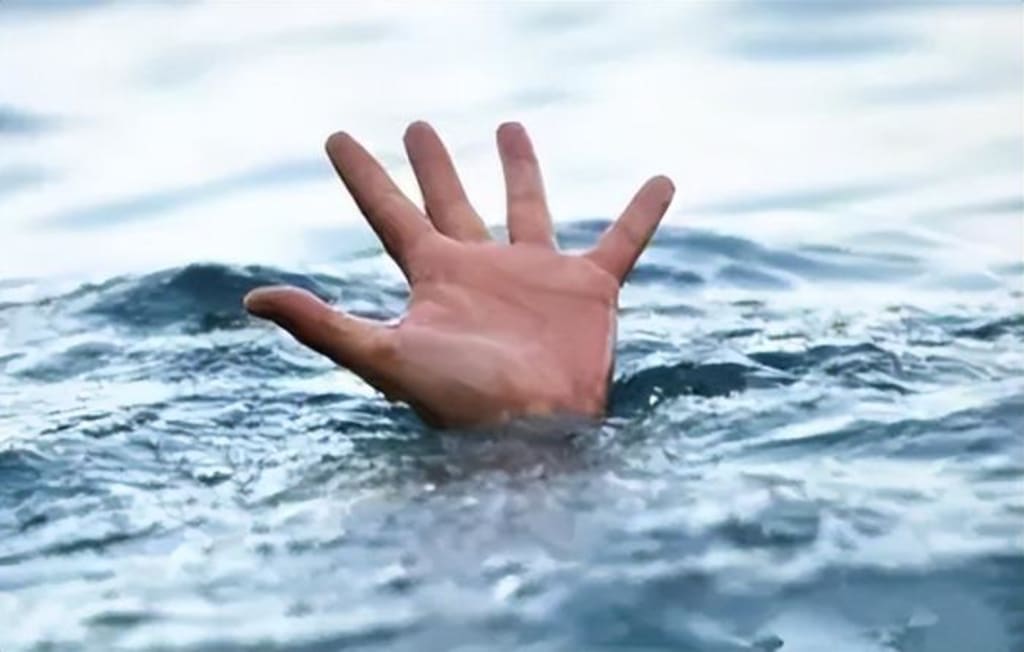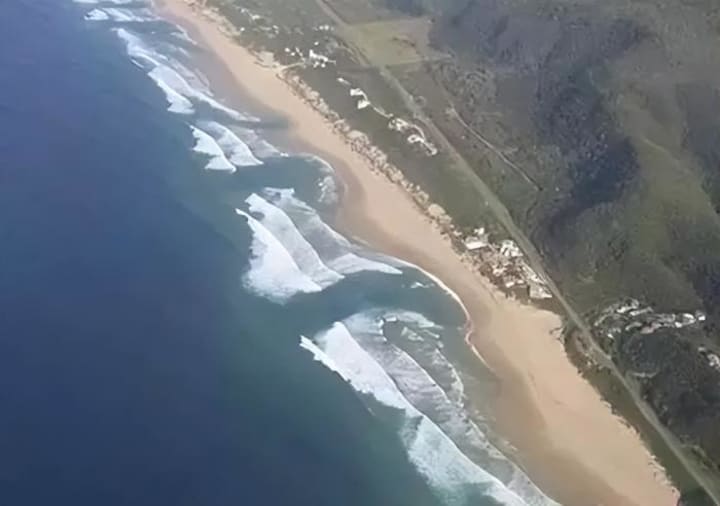How to save yourself from the "man-eating" offshore currents?
The "invisible killer" - offshore currents

On the afternoon of July 31, two young tourists were swept away by a wave and disappeared into the sea in Qingdao, Shandong Province. The video released by citizens shows two young guys watching the sea and taking photos on the dike outside the guardrail, when a wave kept coming over, then a huge wave knocked them both down and swept them into the sea. One of them had fought to climb to shore, but was soon dragged into the sea again by the waves and disappeared. The scene was heartbreaking to watch.
After the incident, several rescue teams rushed to the scene to search. After many efforts, the two lost in the sea, respectively, on August 1 at noon, and on August 3 morning were found by the rescue team but had lost vital signs, two lives so lost, too heartbreaking!
A summer beach is a good place for people to spend their summer vacation, but many tourists do not understand the true "temperament" of the sea, often underestimating the power of the sea. Even the seemingly calm sea surface is also hidden danger. The two tourists who fell into the sea in Qingdao may have met the number one "invisible killer" of the beach - the offshore current. According to statistics, about 90% of beach drownings are caused by off-shore currents.
In China, Qingdao's bathing beaches are one of the highest incidences of off-shore currents, and many swimmers are swallowed by them every year.
According to the U.S. Bureau of Oceanic and Atmospheric Administration statistics, in the United States, drowning caused by offshore currents an average of up to 150 cases per year, in Florida, the number of people who die each year from offshore currents even more than the sum of thunderstorms, hurricanes and tornadoes deadly. Australia every year the offshore currents swept away the surfers and tourists are countless. When you go to the beach, be aware of offshore currents!
So, what exactly is an offshore current? What makes it so powerful? How does it kill people? How to identify offshore currents? In case of an encounter and how to properly survive?
Offshore current, scientifically known as Rip Current, is a narrow and strong current flowing from the coast to the sea through the wave area, flowing in a direction almost perpendicular to the shoreline, and is a powerful current flowing rapidly away from the coast and out to sea.
Offshore current is a kind of surface current that is a combination of waves and shallow topography, usually occurring at the shore, its width is only 10~30 meters and its length can be 30~100 meters or even longer. Due to the large volume of water, and narrow water flows, offshore flow is extremely fast, mostly in 0.3 to 1 meter per second, the fastest up to 3 meters per second, more than the average human swimming speed, each share of the sustained flow time of 2 to 3 minutes or even longer. This rapid current often contains a huge amount of energy, enough to be close to it in a very short period to quickly drag adults into the ocean, it is almost impossible for ordinary people to escape from it, even lifeguards in training are often swept into the sea by it, and sometimes even the surface of the lifeboat is difficult to avoid.
The reason for the formation of offshore current, simply put, is that when there are strong winds continue to blow towards the coast, the seawater-form waves continue to gather and accumulate on the coast, and there is a continuous rush to the coast of the waves pushing, the waves in the rush to the shore when they encounter obstacles (land) will collapse, and gradually form a rush back to the outer sea back to the current.
The danger of offshore currents is that they are unpredictable, sometimes sudden, hidden, and extremely dangerous.
Offshore currents in the local wind and wind direction, tides, water changes and movement, submarine topography, meteorology, and, other factors, the strength and state of offshore currents are difficult to predict, so accurate forecasting of the time and location of the occurrence of offshore currents is not yet possible. Sometimes it can appear suddenly without warning. Regardless of weather conditions and beach type, even a sunny calm day can still appear suddenly.
More dangerous is that the offshore current is hidden when it occurs, the sea often looks very calm (but under the calm is a rapid surge), with no obvious waves, and silent, it is difficult to attract people's attention until people are caught in it will suddenly find a huge force to pull, while its fast flow, so that people simply do not have time to react, and when the reaction is too late, may have been pulled into the sea a long distance away. It is very dangerous for people at the beach, once encountered when the offshore current, the sudden strong impact, will bring psychological panic to the victim, a nervous will instinctively desperately vertical swim to shore, but this offshore current is continuous, unless the offshore current is very small, or so against the current, even if the swimmer is also very difficult to swim back to shore, and finally may be drowned due to exhaustion of physical strength.
Offshore flow can be said to be the biggest safety hazard of the beach, offshore flow "suction" events occur from time to time.
One of the most shocking accidents occurred in 2012 at a South Korean beach. On August 4 of that year, due to the excessive heat, Sundae Beach in Susan, South Korea welcomed 800,000 visitors. In the morning, a strong offshore current suddenly appeared between two lookouts, and 143 visitors were swept away by the current, 66 of whom were pushed by the current to the sea 70 to 80 meters away.
Over two days, July 8 and 9, 2017, lifeguards at various Los Angeles County beaches performed more than 600 rescue operations and more than 700 emergency medical treatments due to the off-shore current.
On August 14, 2021, 17 outsiders went to the beach near Jiangsu Village, Banting Town, Zhang County, Fujian Province to play in the water, resulting in a wave hitting up and all 17 people were swept into the sea. After the rescue of locals, only six people were rescued, and the remaining 11 people were unfortunately killed.
Offshore currents are so dangerous that everyone must pay special attention to safety when playing in the water at the beach. For offshore current prevention to have some understanding. So what does the offshore current look like? How do we anticipate it?
How to identify offshore currents?
When going to the beach, we can try to identify the offshore currents through the naked eye, standing high on the shore can more easily identify the offshore currents.
Offshore currents usually exist near 30-40 meters of white waves from the shore, it comes quietly, and the surface is like OK almost nothing waves. If you see the beach parallel to the shoreline of the strip of waves from a distance to the coast, and this strip of white waves broken more, and the water at the interruption of the waves and relatively calm, it means that the interruption of the place may have formed offshore current. In addition, offshore currents and waves meet the sediment stirred up, which will make the water surface becomes very turbid, and the watercolor compared to the surrounding area will be a bit yellow.
The bottom of the off-shore current is much lower than the bottom of the two sides, so when you look down from a high place, you can observe the difference in the color of the seawater, the two sides of the seawater color are lighter, while the location of the off-shore current is darker.
In addition, shallow sand troughs, headlands (deep into the sea of the pointed land), near the reef, are offshore currents are prone to areas, pay attention to avoid these dangerous areas, and go to the regular beach swimming baths. And in the summer tide, the probability of offshore currents is higher and stronger when the waves are large, so be sure to check the local tide time and wave forecast in advance to have a good idea of the water conditions and tidal conditions.

When you get to the beach, you have to observe first, before going into the water to see the police line or warning signs on the beach do not cross the border when playing in the water. Do not think that the police line and warning signs are just a frightening display! Try to choose the sea with lifeguards, and swim in the lifeguard's line of sight.
How to survive when encountering offshore currents?
If inadvertently caught in the offshore current, how to properly self-rescue it?
First of all, do not be nervous, must first let yourself calm down, do not panic to make unnecessary struggle.
The offshore current usually occurs on the shore, it will only take people away from the coast, but will not drag people down to the bottom. So what you need to do is to be calm, take a full breath and try to keep your body afloat.
When the offshore flow is strong, do not fight to swim vertically against the shore, because the force of the current is very large, people in the water against it, it difficult to lean on shore, this is just a waste of energy, physical exhaustion may be more dangerous.
The more correct method of self-rescue is to stay calm to save energy, try to swim out of the area where the offshore current is located in a direction parallel to the coast, and then swim back to shore.
If you really can't swim out horizontally, you should relax your body to save your strength, follow the trend and let the off-shore current rush farther away, the further to the sea, the weaker the off-shore current will be, when the flow is obviated down, try to keep swimming away from the direction parallel to the shore, and then swim back to the shore, or find the time to shout for help and wave for rescue.
Always be alert when you go to the beach! Never underestimate the power of the sea, even if the sea sometimes seems calm, there may be "invisible killers"!
About the Creator
Apostolakis
To make scientific, diligence is the mother of success






Comments
There are no comments for this story
Be the first to respond and start the conversation.